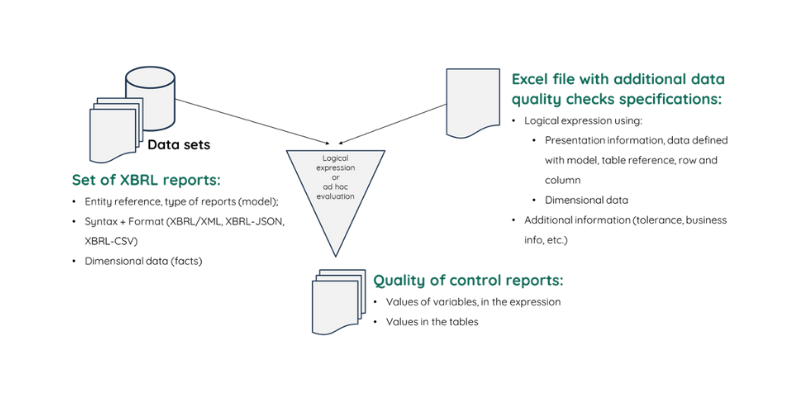The Business Context
Until 2008, financial authorities had too insufficiently structured data to carry out their supervisory role. Since then, a lot of structured data have become available. However, this has come with consequences to be managed by regulated entities:
- Potentially redundant data
The regulatory wave has meant that each authority, regional, national, European, has developed its own report, with the consequence that the same information can be reported in different reports. - Multi-format data
Each time an authority has to implement a new reporting, the question arises as to which format should be used for the implementation. The most common standards are XBRL, SDMX, XML, Excel, and inline-XBRL. Therefore, as soon as an organization needs to produce reports from different sources, the problem of format heterogeneity arises. - Difficult-to-validate data
The XBRL standard is the only one that provides validation mechanisms. Unfortunately, it is limited to the XBRL data in the report. Therefore, there is no immediate solution to the problem of validating data from different sources and different formats.
Read our dedicated case study [How to apply ECB EGDQ plausibility checks for CRD reports] and learn more about how we can help !
Acsone’s Vision
In recent years and through experiences, Acsone has developed certainties that have allowed a vision to emerge. This vision aims to fulfill several objectives:
1. The Data Quality Management (DQM) system must be independent of a specific data format.
The Open Information Model as defined by XBRL.org has all the expected characteristics. It is extensible and can be used to represent any data in XML, SDMX or Excel data. It is designed to represent both XBRL and inline-XBRL data. It can be represented using different grammars, XML, CSV, JSON. We prefer the JSON format.
2. The DQM system needs to take advantage of the information associated with the structure of the report.
- If it is a XBRL report, it is the taxonomy which will provide this information;
- For XML or SDMX reports, it is the schema or DTD that provides this information;
- For Excel, it is the 3-dimensional presentation format (sheet, row, column) that is used.
3. Rules must be expressed in a syntax that is at least understandable to the business.
It would be best if the quality checks use rules expressed in a language that is easily understandable and modifiable for business users.
4. The solution must be flexible and extensible to specific situations.
Acsone’s Approach
Our model is based on intuitive concepts:

The main benefits of this approach are:
- Flexibility
- A new XBRL taxonomy can be added if it conforms to Data Point Model architecture; we can add specific labels in order to reflect business minded information in the table linkbase specifications.
- New business rules can easily be added or existing ones can easily be altered.
- Extensible
- New operators or functions can be added, if needed, ad hoc implementations can be used when no logical expression can be defined for the check. For example, a correlation matrix function can be used for statistical needs.
- Additional data formats like Excel, XML, even SQL can be added if intuitive conventions can be added to reference reported data.
- Speed
- Logical expressions and data formats have been optimized to speed up execution; there is no need to specify checks with formula specifications.
- As tests can be run immediately, implementation time can be shortened.
- Cost effective
- The complexity of XBRL specifications has been encapsulated; only business logic is required, not XBRL skills.
Capabilities for ECB/DNB/CSSF plausibility and quality checks
The ECB (EGDQ checks) and other national authorities like the DNB (The Netherlands) and the CSSF (Luxembourg) perform additional quality checks to compare several CRD submissions of the same issuer over several years.
Out of the box, Acsone’s dedicated Data Governance solution is available for XBRL data regarding data quality checks initiated by the ECB, the CSSF and the DNB. In fact, the Acsone solution natively supports these conventions because it is implemented on top of XBRL taxonomies. Currently, the Acsone solution supports rules defined on CRD IV taxonomies.
In practice, we offer an independent implementation of the data quality checks as published by the above-mentioned authorities.
An issuer can make sure its CRD report passes the relevant data quality checks even before they are submitted to the national authority. This ensures a higher data quality level and a faster fulfilment of the regulatory constraints.
Additionally and to best fit your needs, our technology can be easily extended to support other XBRL taxonomies if they are built according to the Data Point Model conventions.
Let’s explore how we can collaborate. Book your personalized demo now.
